We had a quick overnight trip ‘off-island’ this past weekend to visit the Weald & Downland Living Museum for a long leisurely afternoon. The museum is just inland from Chichester in the South Downs, a lovely landscape of rolling hills along the south coast. The purpose of the museum is to conserve historic buildings, and to that end they have over 50 relocated buildings (so far) from the surrounding counties located across their 40 acre site. Besides a small museum, there is interpretive signage and more importantly, people reenacting the skills and crafts of the time period from 950AD to the 19th century.
My UK readers may also be familiar with this location as it is the site where the very popular TV show Repair Shop is filmed. They had just finished filming a couple of weeks before, so we didn’t get to see any of the craft experts at work, but we did get an up-close look of the barns where they film.
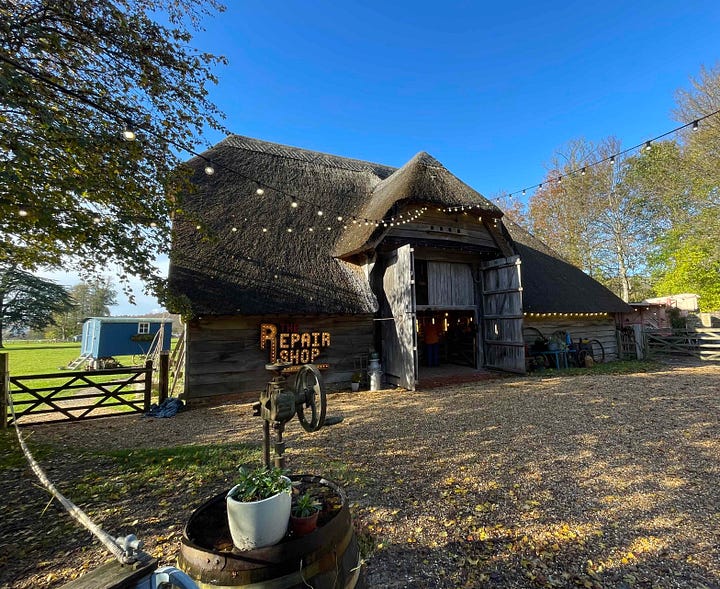
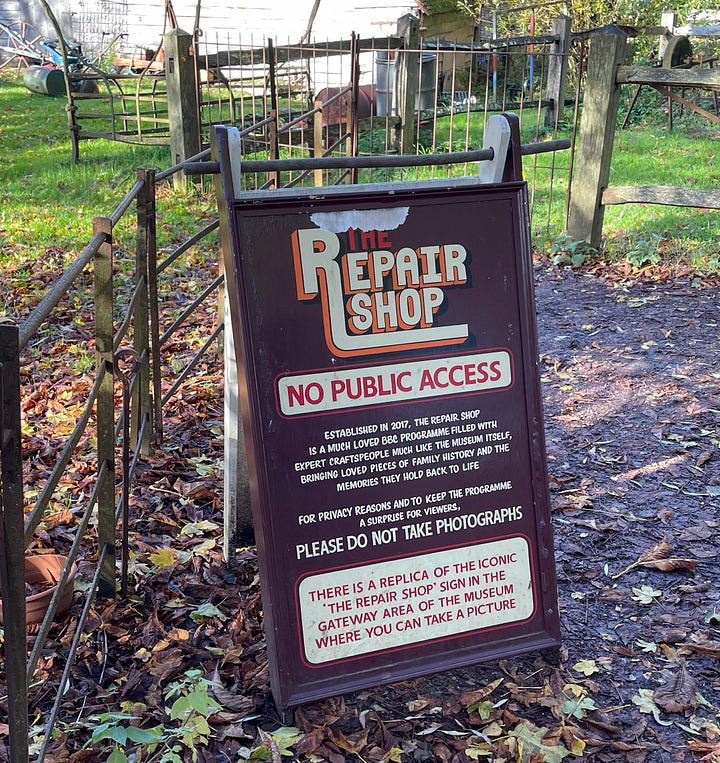
For those who are unfamiliar with the Repair Shop, as it says on the production company website: “The Repair Shop is a magical place, where much loved but broken treasures are brought back to life by a dream team of some of the country's most skilled craftspeople.” The show is a combination of hearing the stories of why these broken treasures mean so much from the people who bring them to the barn, alongside learning about the skills it takes and the challenges for the master craftsmen and women who figure out how to repair the broken items. It is almost always a tear-jerker; and not just for me. Even my bother-in-law is known to shed a tear or two!
The Weald Living History museum is a perfect setting for the Repair Shop, since the purpose of the site is to preserve and keep learning from the buildings of our past. And so we wandered through centuries of British history, imagining what it was like to live in each era, pure heaven for someone who thinks about HOME a lot. We stooped through low doorways into a a range of architectural styles. Some small houses had heating from only one fireplace, sleeping on straw ‘mattresses’ with rough linens on firm boards, and wind whistling through the cracks in the plaster walls.
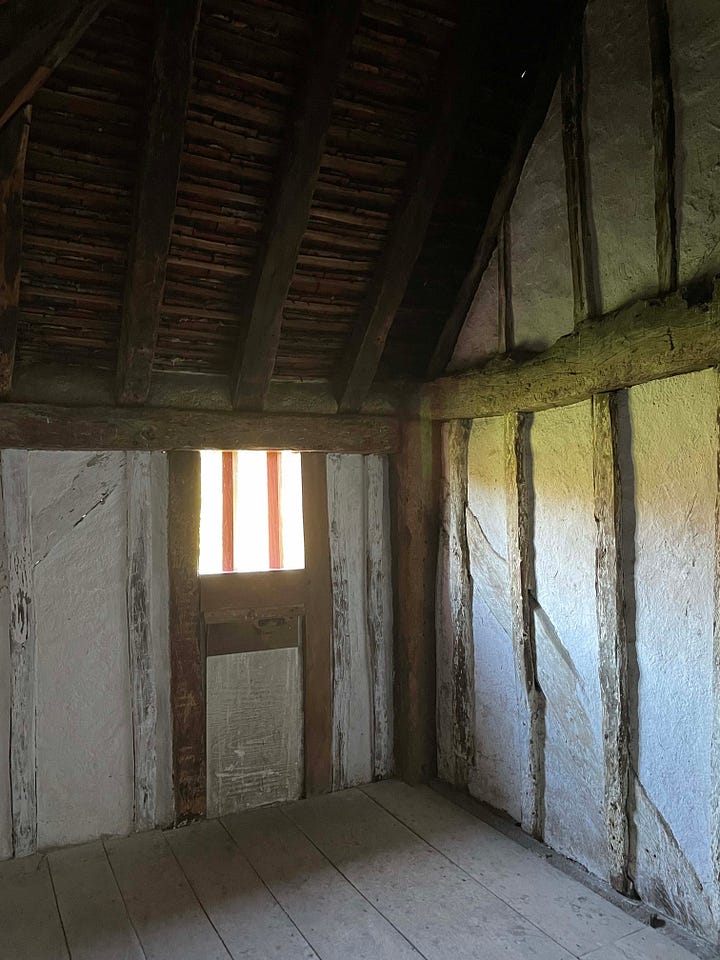
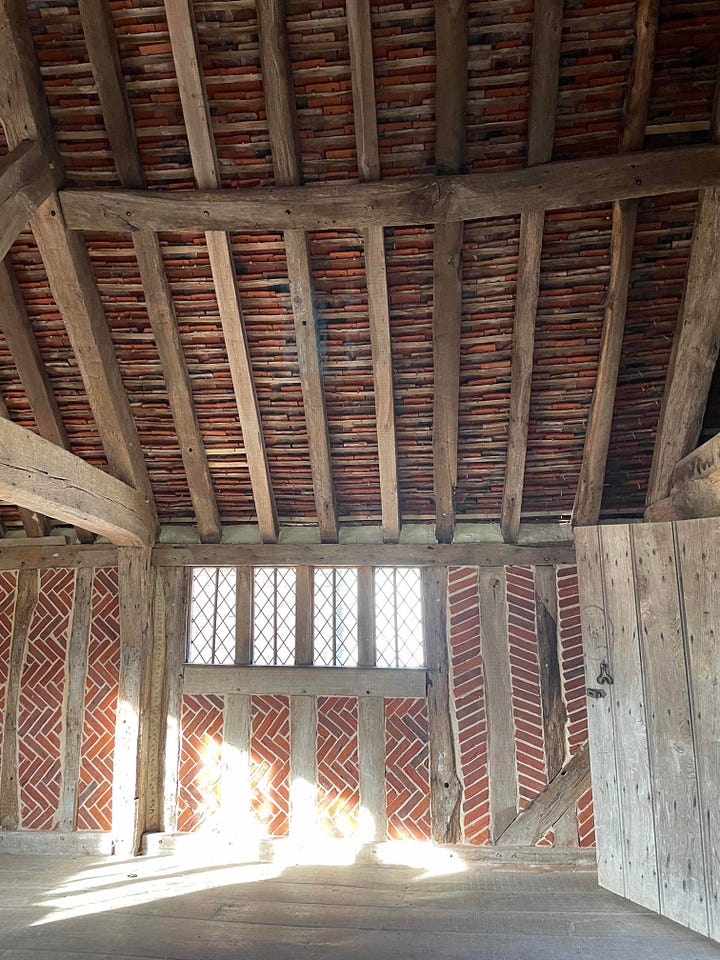
Kitchens and food-preparation areas varied widely in size over the years. Oftentimes there didn’t seem to be a food preparation area at all separate to the main room for living, eating, bathing, getting warm and everything else. In most cases the food storage areas were larger than any separate food prep areas, I assume to store large quantities of food for the non-growing seasons. Given my lacklustre success growing a few vegetables in the garden in recent years, I’m not sure I would have been able to feed my family year-round with only a small garden by the side of the house.
Fires and eventually stoves were always in the centre of the house since they were used for home heating, water heating, and of course cooking. Most homes were two stories; bedrooms above, with the common rooms where most of life happened on the ground floor.
There were of course the full range of latrines and other toileting facilities, both inside and outside, and of course without plumbing. One amusing inside latrine was in a relatively large house with a closet on one side of the primary bedroom on the 1st (UK)/2nd (US) floor. Inside the closet was a hole cut into a board where one sat. The hole emptied down just outside the back of the house. Hopefully on a different side to the garden!
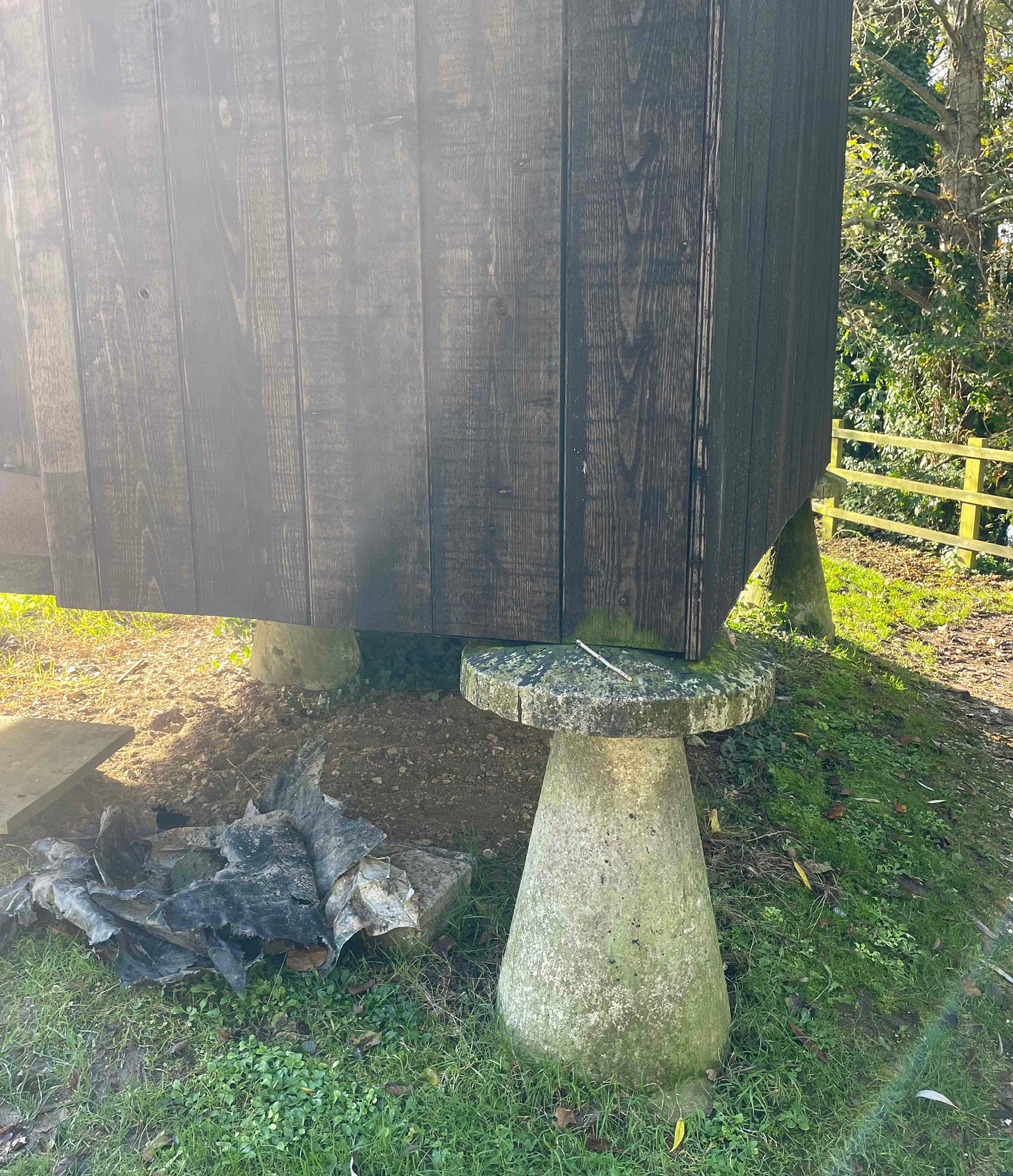
What struck me most as we wandered around inside and out of these mostly simple but not shabby houses was how COLD it was. This was a particularly lovely autumn day too, with full sun in the afternoon, and only a light wind blowing. Several of them did have fires going inside that only warmed the area just around the fire itself. We were amply dressed in trousers and warm down coats and waterproof boots or shoes and even constantly walking around we were still chilled. Obviously if we were living in the time of these buildings, we would have been working hard in the garden, in the fields, with the livestock, or cleaning inside the house. Perhaps we would have been working in a factory or at a trade like a blacksmith or welder and would be close to big fires or ovens.
Nevertheless, as much as I enjoyed the time imagining, there was never a moment when I considered that it would have been fun to live back then. Even in a place where the climate is not extreme, and food can be grown for at least half the year in reasonably fertile soils, making a home was hard work, and long-term survival less certain.
It does give me pause when I think about my moaning about the rain and damp, when I have a very easy way to get warm and dry almost immediately when I come back inside. I’ve got central heating, a clothes drier, a stove that comes on when I twist a knob and doesn’t require me to chop wood first. Plus I have a closet full of clothes that can be traded for the wet ones.
Although not as old as these houses, the thing that still amazes me is the age of the houses I’ve lived in since I arrived in the UK. Our first flat in Plymouth was in a Grand Victorian Villa, built sometime in the mid-1800s (I have no records since we were just renting). The house we bought nearby in Plymouth was relatively new, built in 1900. Our current house on the Island is back firmly in the Victorian era, with a date of 1874; we will be celebrating it’s 150th birthday next year. These homes have all been brick or stone-walled, as solid as can be. They have had their challenges and quirks as all older buildings do, but I’ve felt quite comfortable in them, and well-protected from the elements.

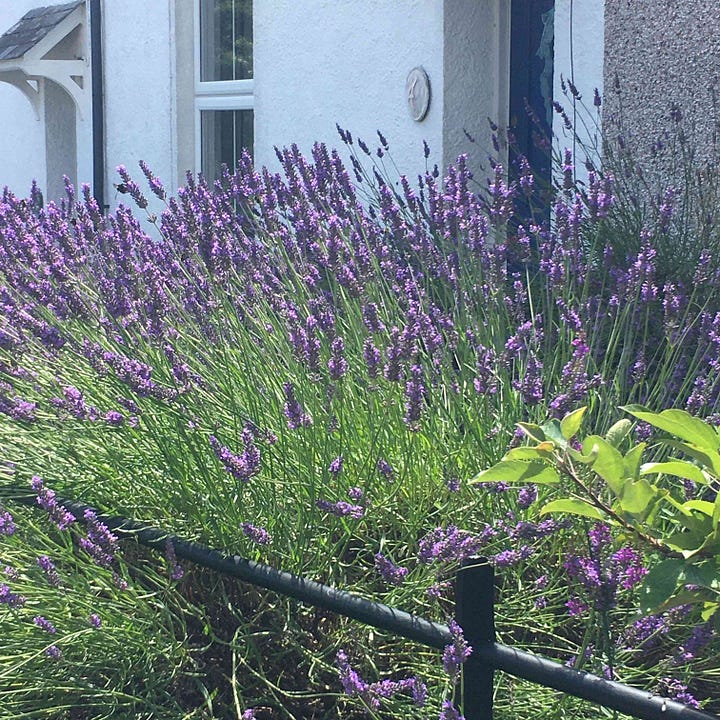
In contrast, with the exception of one or maybe two houses I lived in when I was in California, none of them was built earlier than 1950. They were all timber-framed, and to people from places like the UK they seem flimsy and barely able to withstand a strong gust of wind. To their credit, the houses I lived in, and there are MANY, all survived strong earthquakes, gale force winds, torrential rains and even small local floods and mudslides. I’m not sure whether they will still be lived in, as-is, in another century. But they suit the climate and the indoor-outdoor lifestyle well. Only time and climate change effects will tell how well they endure.
After a day saturated with imagining living in homes of all ages, and a lovely visit with longtime friends (thanks Vicki and Adrian!), it was good to eventually return to our home, the one that is aging gracefully in place. We are hopeful it can give us many more years of shelter and warmth and a home to continue to fill with memories. Yes, I am quite happy to be alive now instead of a century or more ago.
Many thanks as always for reading this week! If you want, let me know in the comments about your house, and how it makes you feel. Is it well-suited for your location? Would you like to have lived a hundred years ago? What do you think might have been better in the past?
Until next week,
xx Sabrina
If you liked reading this, feel free to click the ❤️ button on this post so more people can discover it on Substack 🙏

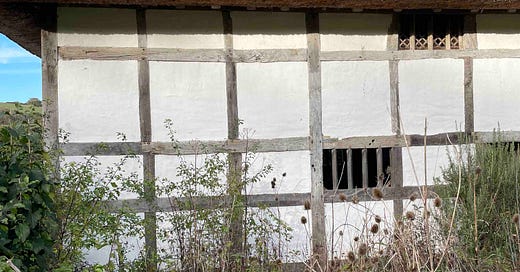


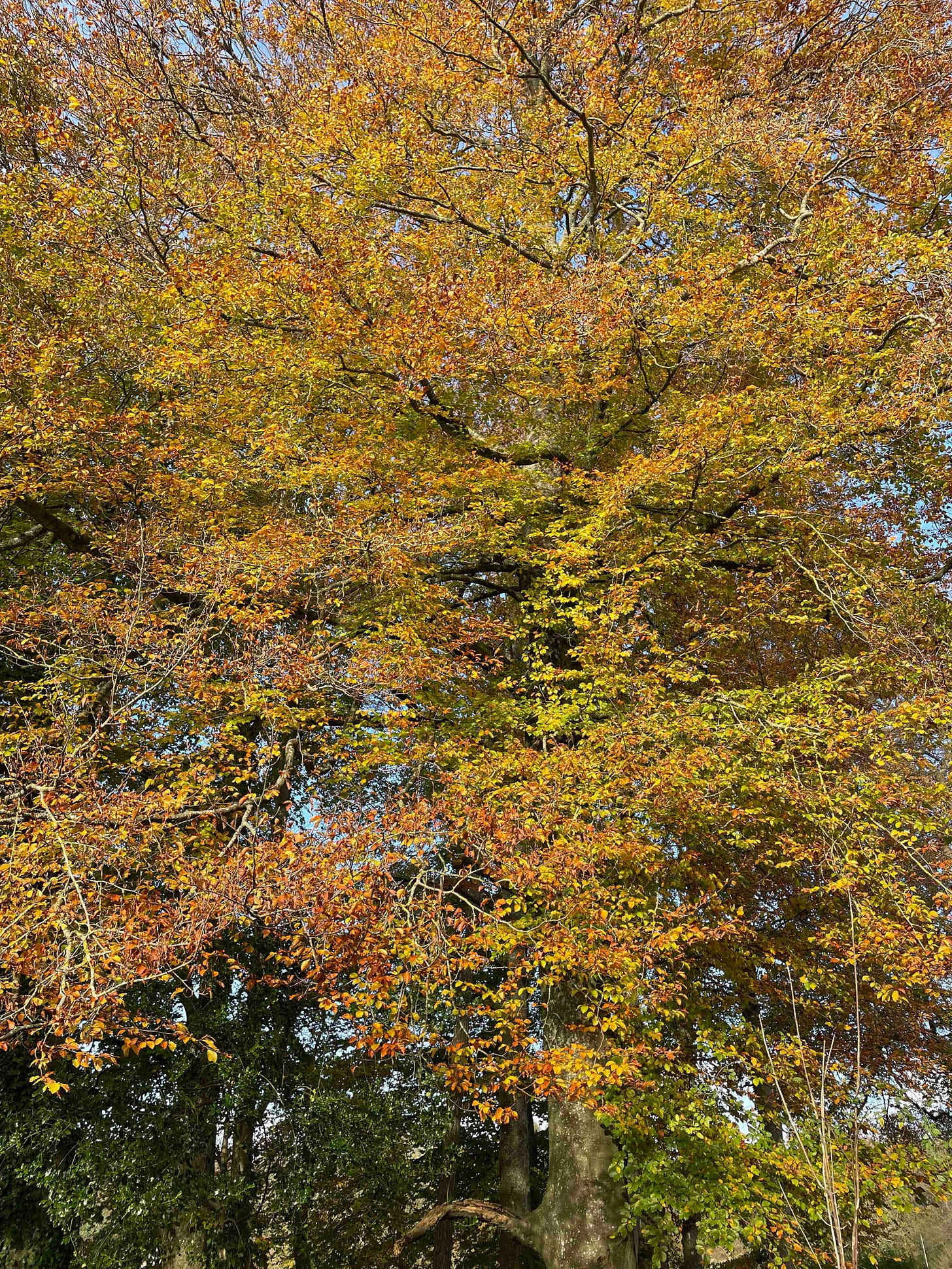
Such a lovely read, Sabrina! We used to visit this museum a lot when I was a child, and I think I last went about four or five years ago. It's a beautiful site - we used to go whenever we had family or friends staying with us, and the younger generation in the group would leave 'our' adults far behind as we'd explore for hours and hours. Absolutely wonderful!
I love how you've woven the museum visit into a post all about the different - and differently-aged - places that you've called home over the years. A beautiful post - thank you so much. 😊
Teeth chattering indeed.
Do you think we are all too soft? That we've given up hard manual labour in favour of sitting in comfy chairs with the central heating on?
I say that reclining on a comfortable, textured couch, my feet under a throw as I watch Escape to the Country whilst eating chocolate!
As for the loo? Ye Gods! No warm 'little room', no thick ply loo paper? No flush?
Yes, I am soft, it's true.
Sabrina, thank you for the kind of post that makes me realise my good fortune!
Off to have a bubble bath...